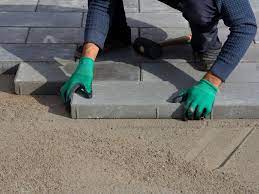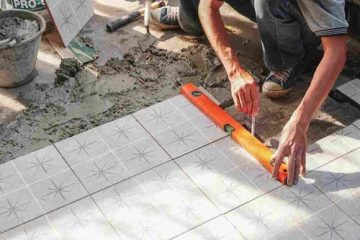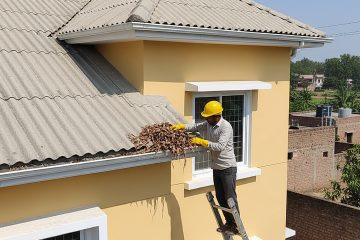6 Common Mistakes to Avoid While Installing Concrete Driveways

Considering its strength and longevity, concrete is a common pavement medium nowadays.
Concrete may be tailored with various levels, colours, and textures to meet your demands and preferences, which is another factor contributing to its popularity.
But when it comes to installation, this adaptable material does need some safety precautions!
To ensure that the results look fantastic and last, this blog post will discuss the five blunders during the installation of exposed aggregate driveways in Melbourne.
- Dimensions
It is simple to underestimate how much concrete you’ll require, especially if the project is not seen in three dimensions. Because concrete projects are volume-based, it’s important to consider more than just the surface area. Understanding the project’s geometry and the volumetric formula—length times width times height—is necessary to calculate the volume. When the shapes are spherical or irregular, the measurement could be trickier.
- Not Providing Adequate Drainage
Your driveway will gradually erode as a result of water erosion if it is not correctly levelled. Additionally, the gravel road may begin to collect silt due to inadequate drainage. As a result, the driveway’s traction will soon decrease as the individual gravel pieces gradually lose their friction. Without proper drainage, the driveway will eventually become submerged in a quagmire. You should decide to instal a geotextile fabric over your subsoil to produce a base layer to avoid this.
- Using Improper Tools
Concrete installation services do not employ sophisticated or cutting-edge equipment. For one simple reason—they work—contractors have been using the same tools for decades. Additionally, the setup time for concrete tools is minimal, which is crucial because pouring concrete takes a lot of time. Although different types of concrete might allow for a longer timescale, there is still a certain window in which work can be done, therefore the right tools must be available.
- Not Installing Edging
Your gravel driveway will ultimately start to pour out from the sides if you instal it without any boundaries to keep it together. You’ll notice that the gravel is dwindling with time and will need to be regularly refilled. Along the route to your garden, on the street, on your sidewalk, and elsewhere, the gravel may also become unsightly. Make sure that concrete or brick edging is installed before the gravel is poured down to avoid this.
- Failing to Level or Work the Concrete
In the case of pouring concrete, time is of utmost importance. To ensure that the finished project is level and devoid of voids, it is important to work the concrete while it is being poured for big areas. Unfortunately, a lot of homeowners don’t realise how crucial levelling and working the concrete is. Self-leveling concrete does exist, it is true, but it is not a solution for every work. This particular compound is intended for smaller jobs, and even those jobs can need a professional’s help.
- Forgetting the Finishing Work
Your effort is not finished until the concrete is poured. Later issues will occur if finishing work is not completed on wet cement before it hardens or if mistakes are made.
Concrete that hasn’t been screeded will build up rough and unevenly. To remove any excess concrete that can result in an uneven surface, run a screed board over wet concrete while going back and forth along the forms. Once dry, you’ll also want to edge your freshly laid slab. To do this, move the edging tool back and forth between the forms and the aggregate while using long, delicate strokes.
Conclusion
If done correctly, driveway paving is a crucial outdoor installation process that will increase the appeal of your outside house space. Speak to a local paving professional for additional guidance on correctly laying a gravel driveway.







